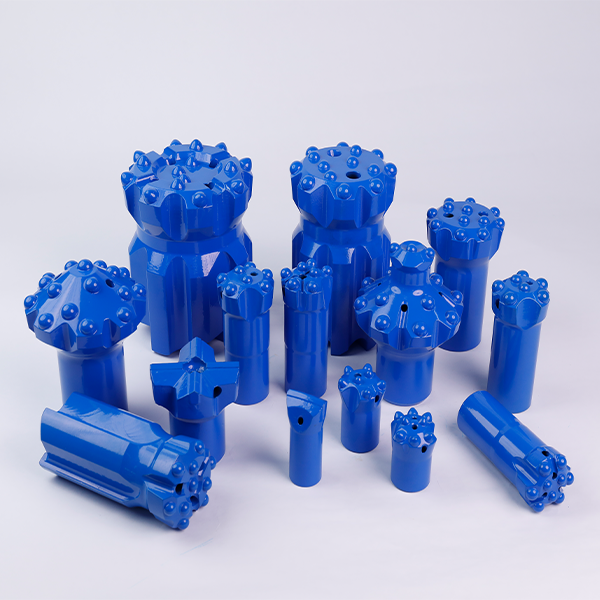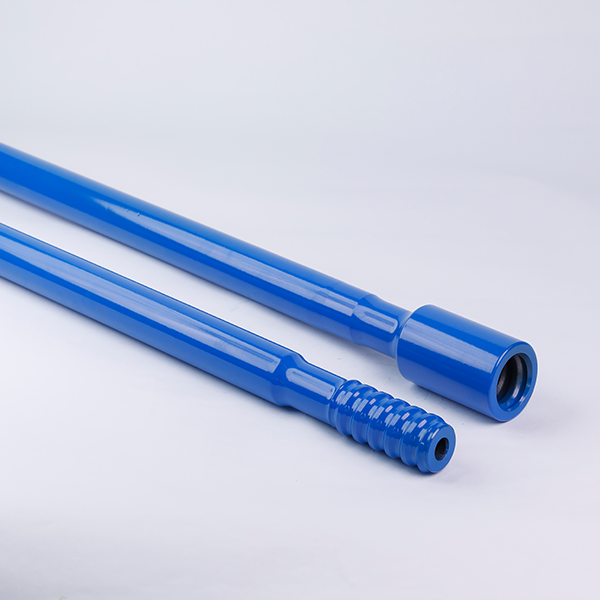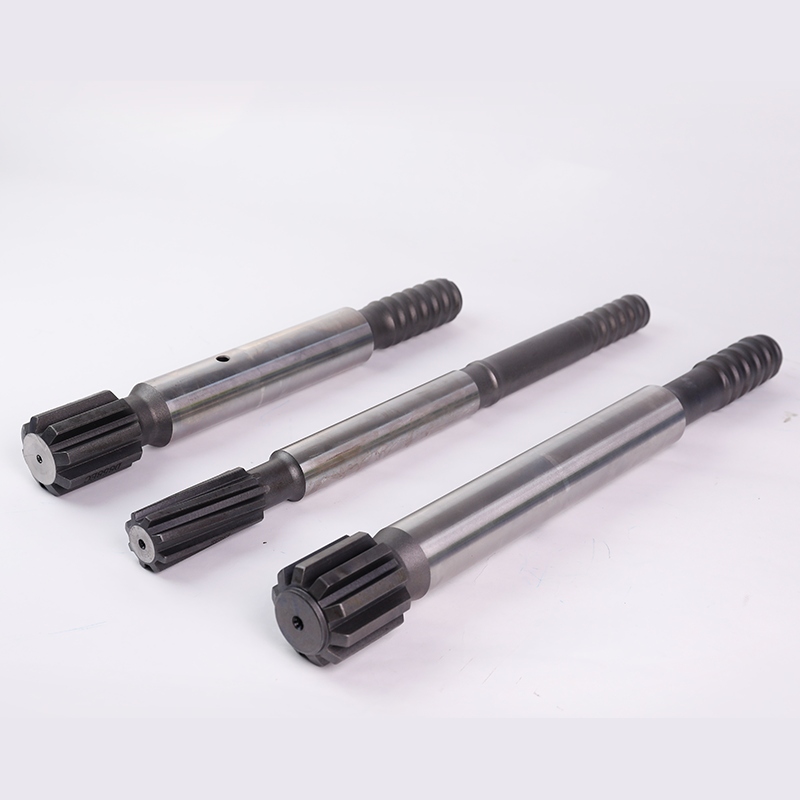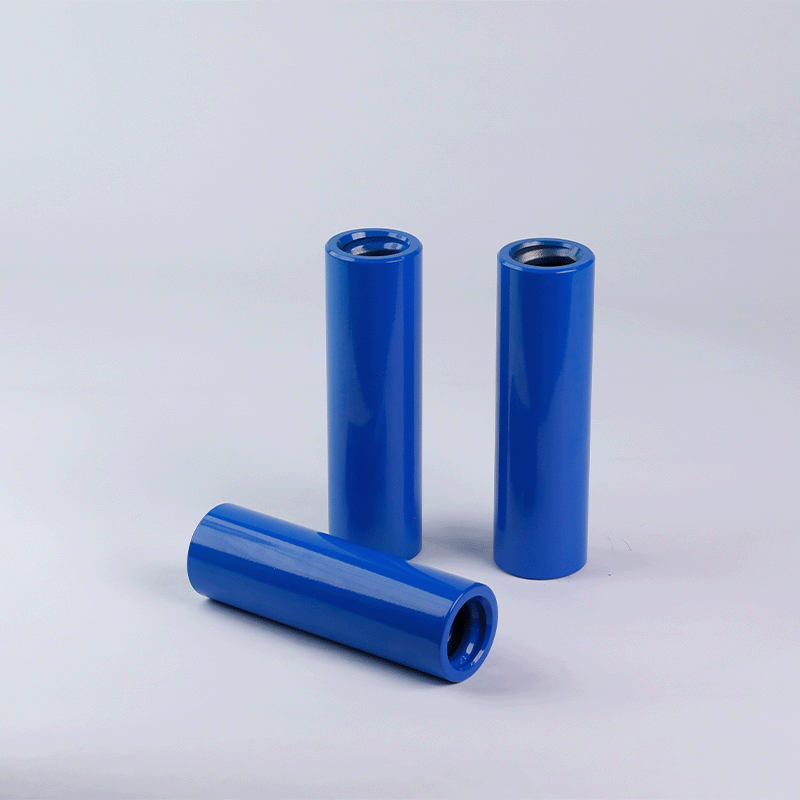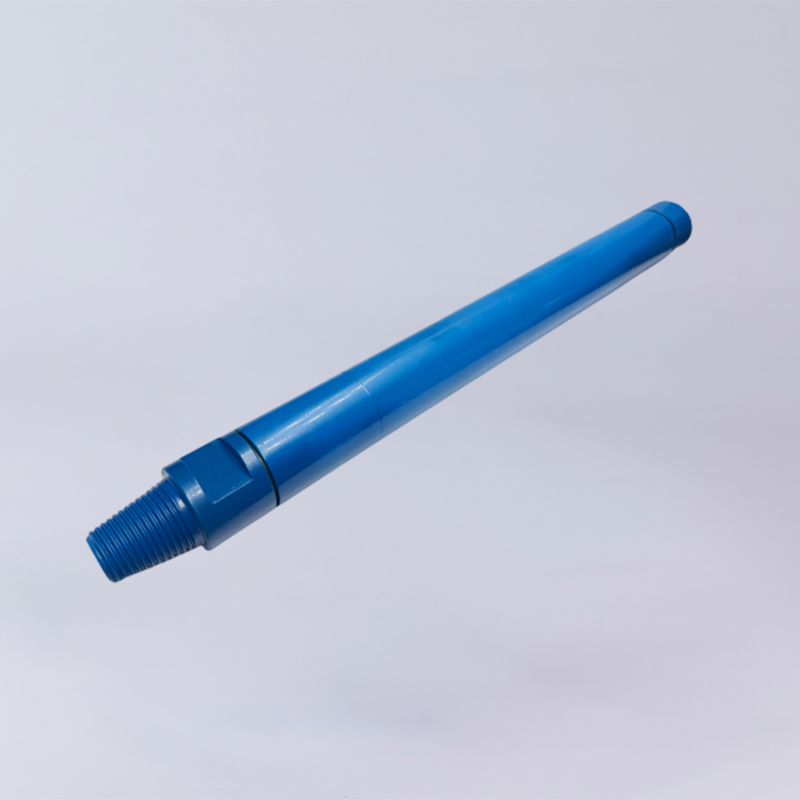A rock drill rod is a fundamental component of a rock drilling system, connecting the drill bit and the shank adapter. It serves as the medium for transmitting the driving force from the rock drill to the drill bit, facilitating the drilling process through a threaded connection. Rock drill rods and drill bits come in various types, depending on the application and drilling conditions. However, in terms of service life, drill rods generally last longer than drill bits.
Despite their durability, drill rods are still susceptible to various types of failures, often caused by improper handling, excessive pressure, material fatigue, or harsh drilling conditions. These failures, if left unaddressed, can significantly impact drilling efficiency, increase operational costs, and compromise safety.
To help drilling professionals and operators extend the lifespan of their drill rods, we have compiled 11 common drill rod failures and their respective solutions. Understanding these failure modes and their corrective actions will enhance drilling efficiency and reduce unnecessary replacements.
Common Causes of Drill Rod Failures and Solutions
Drill rods are subjected to intense stress, including repeated impact loads, rotational torque, and bending forces. Over time, these forces contribute to various types of failures. Below, we discuss the most common drill rod failures and how to address them effectively.
1. Surface Fatigue Due to Hammering on Stuck Steel
- Cause: When operators attempt to free stuck steel by hammering on the rod, it creates surface fatigue and can lead to dents and nicks that compromise structural integrity.
- Solution: Instead of hammering, use a drill rod wrench to gently twist the stuck steel and loosen it without damaging the rod.
2. Surface Fatigue Due to Improper Handling
- Cause: Improper care, such as dropping rods or stacking them carelessly, results in surface nicks and dents that develop into stress concentration points, leading to fatigue failures.
- Solution: Always store rods properly in a rod rack to prevent accidental damage. Avoid dropping rods, as impact damage weakens their strength over time.
3. Internal Fatigue Due to Corrosion
- Cause: Corrosion from exposure to brine, water, or other corrosive flushing agents weakens the drill rod from within, leading to premature failure.
- Solution: Ensure proper storage conditions, frequently inspect and replace outer protective components, and neutralize flushing agents when necessary to prevent corrosion.
4. Failure Due to Wandering or Drifting Holes
- Cause: When the drilled hole deviates from the intended path, stress concentrates near the coupling sleeve ends or above the thread radius, causing premature failure.
- Solution: Utilize straight-hole drilling devices or alignment systems to maintain accuracy and prevent unnecessary stress on the drill rod.
5. Worn Threads and Coupling Sleeves
- Cause: Over time, repeated coupling and uncoupling of drill rods wear out thread connections and coupling sleeves, leading to a weak connection that increases failure risk.
- Solution: Replace worn coupling sleeves before they compromise the rod’s integrity. Never pair a worn coupling sleeve with a new rod, as this accelerates wear on both components.
6. Bending Due to Overfeeding
- Cause: Applying excessive feed force while drilling can bend the drill rod, leading to structural damage near the coupling sleeve ends or above the thread radius.
- Solution: Monitor and adjust feed force based on rock conditions to ensure proper drilling pressure without overloading the rod.
7. Bending Due to Misalignment
- Cause: Poor alignment of the drilling system increases bending forces on the drill rod, leading to premature failure.
- Solution: Use alignment tools to monitor hole orientation as soon as the drilling process begins. Additionally, replace worn feed pads to maintain stability.
8. Failure Due to Heavy Rotational Loads
- Cause: Using a dull drill bit increases rotational stress, leading to excessive reflected force and eventual failure near the thread radius.
- Solution: Resharpen drill bits as soon as wear flats reach one-third of the bit size. Discard drill bits when the carbide profile height is too low to function effectively.
9. Failure in Voids, Seams, or Broken Rock Conditions
- Cause: Drilling through fractured rock formations, seams, or voids creates sudden shifts in pressure, causing stress buildup near the coupling sleeve and thread radius.
- Solution: Adjust drilling pressures and fine-tune the feed force based on rock conditions to prevent shock loads and stress spikes.
10. Failure Due to Continued Percussion When Drill Steel Is Jammed
- Cause: When a drill steel becomes jammed in a void or seam, continued percussion without stopping damages the rod.
- Solution: Use a drill with anti-jam features to detect and prevent excessive impact. Reduce feed and percussion pressure when encountering difficult formations.
11. Failure Due to Excessive Play in the Coupling Sleeve
- Cause: Improperly joined drill steels in the coupling sleeve due to thread wear or bridge wear cause excessive play, resulting in chipped or broken ends.
- Solution: Replace worn coupling sleeves immediately to maintain proper engagement and energy transfer between rods.
Best Practices for Maximizing Drill Rod Lifespan
To extend the service life of drill rods and reduce costly replacements, follow these key maintenance practices:
1. Proper Storage and Handling
- Store drill rods on racks to prevent accidental damage.
- Avoid dropping rods, as surface dents and nicks weaken structural integrity.
2. Regular Inspection and Lubrication
- Check threads, splines, and coupling sleeves regularly for wear.
- Ensure proper lubrication to prevent corrosion and friction-induced wear.
3. Monitor and Adjust Drilling Pressures
- Avoid excessive feed force, as it increases bending stress.
- Adjust rotational speed and pressure according to rock conditions.
4. Replace Worn Components on Time
- Coupling sleeves, chuck drivers, and worn drill bits should be replaced promptly.
- Avoid pairing new rods with worn-out sleeves, as this accelerates damage.
5. Use High-Quality Drill Rods from Reliable Suppliers
- Inferior drill rods may have inconsistent metallurgy and weaker threads, leading to early failure.
- Invest in high-quality drill rods to enhance durability and drilling performance.
Conclusion
Drill rods are subjected to continuous impact loads, torque, and high-pressure cycles, making fatigue failure inevitable. However, many failures stem from improper handling, excessive force, and misalignment—issues that can be mitigated through proper drilling practices and maintenance.
By following best practices, monitoring drilling parameters, and replacing worn-out components promptly, operators can significantly extend the lifespan of drill rods, improve drilling efficiency, and reduce operational costs.
The key takeaway is that understanding failure causes and implementing corrective actions will help ensure that drill rods perform optimally throughout their service life. Proper maintenance and correct operational techniques are essential for achieving long-lasting, high-efficiency drilling performance.

